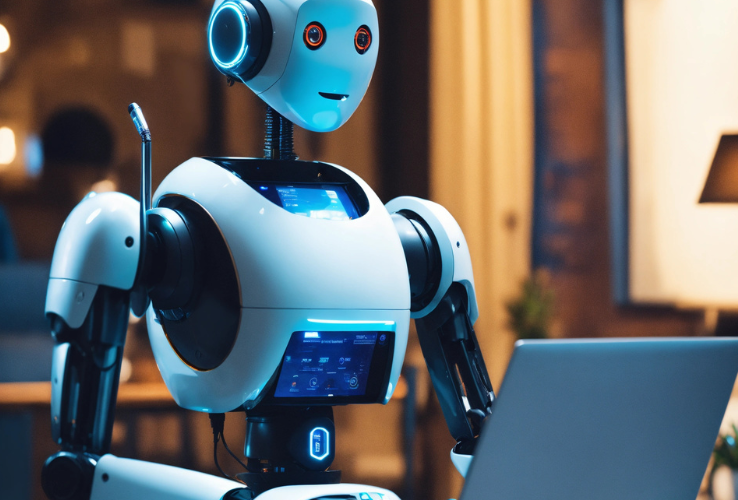AI-Powered Chatbots: Transforming the Landscape of Customer Interactions
The evolution of customer interactions has always been closely tied to technological advancements. From traditional in-person services to call centers, email support, and now AI-powered chatbots, the journey reflects our relentless pursuit of efficiency and personalization. Today, AI-powered chatbots have emerged as a cornerstone of modern customer engagement strategies, delivering not just operational efficiency but also transformative experiences.

The Rise of AI Chatbots: A Necessity, Not a Luxury
Businesses across industries are under immense pressure to deliver seamless, 24/7 customer support without compromising quality. In a world where customers expect instant responses, AI-powered chatbots have stepped in as a vital solution. But their role extends far beyond merely answering queries. They are now driving significant shifts in how businesses interact with their customers by automating repetitive tasks, enabling cost savings, and ensuring round-the-clock availability.
Consider this: According to Gartner, by 2027, chatbots will handle over 25% of customer service interactions across all industries, up from 10% in 2023. This rapid adoption is not simply due to technological feasibility—it is driven by the necessity to stay competitive in a customer-centric market.
Why Businesses Are Embracing AI Chatbots
The adoption of AI-powered chatbots is rooted in two critical aspects: why businesses need them and how they can effectively utilize them.
The “Why”
- Scaling Operations Efficiently: For businesses handling thousands, if not millions, of customer interactions daily, human-driven support models are no longer scalable. AI chatbots bridge this gap, managing a high volume of queries simultaneously.
- Enhancing Customer Experience: Modern chatbots, powered by Natural Language Processing (NLP) and machine learning, understand context, adapt to user preferences, and deliver personalized responses that elevate the customer experience.
- Reducing Costs: Employing a 24/7 human support team is financially burdensome for most organizations. AI chatbots provide a cost-effective alternative while maintaining consistency in service.
The “How”
- Proactive Customer Engagement: AI chatbots can anticipate customer needs and provide proactive assistance. For example, in e-commerce, a chatbot might suggest complementary products or offer discounts based on browsing history.
- Integrating with Existing Systems: Advanced chatbots are not standalone tools; they seamlessly integrate with CRMs, marketing platforms, and analytics systems, creating a cohesive ecosystem that drives actionable insights.
- Leveraging Conversational AI: The use of sophisticated conversational AI allows chatbots to handle nuanced queries, provide multi-language support, and escalate complex issues to human agents with full context, ensuring a smooth handoff.
Real-World Applications: Turning Potential into Practice
Industries as diverse as retail, banking, healthcare, and travel are leveraging AI chatbots to redefine customer interaction.
- Retail: Chatbots assist customers in finding products, tracking orders, and resolving issues—all while offering tailored recommendations that mimic in-store experiences.
- Banking: AI chatbots help manage routine inquiries, such as account balances and transaction histories, while ensuring security through identity verification protocols.
- Healthcare: They enable appointment scheduling, medication reminders, and even symptom checking, freeing up human resources for critical tasks.
- Travel: From booking assistance to real-time flight updates, chatbots make travel planning seamless and stress-free.

Addressing Challenges: Building Smarter Chatbots
While AI-powered chatbots are revolutionizing customer interactions, they are not without challenges. Poorly designed bots that fail to understand user intent or deliver robotic, impersonal responses can frustrate customers and harm brand reputation. To overcome these hurdles, businesses must prioritize:
- Continuous Training and Learning: Chatbots must be trained with diverse datasets to handle a wide range of customer queries effectively. Machine learning algorithms should be updated regularly to adapt to new trends and customer behaviors.
- Balancing Automation with Human Touch: Not all issues can be resolved by AI alone. Successful implementations include a clear escalation mechanism where human agents can step in seamlessly.
- Maintaining Transparency: Customers should always know they are interacting with a chatbot and have the option to connect with a human when needed.
The Road Ahead: AI Chatbots in the Future of Customer Engagement
While the promise of blockchain in supply chains is immense, it is not without challenges. Scalability, interoperability, and the need for industry-wide adoption are hurdles that must be addressed. Moreover, blockchain implementations require a cultural shift within organizations, where stakeholders embrace transparency and collaboration over traditional hierarchies.
The road ahead is one of continuous evolution. As blockchain technology matures and integrates with complementary innovations like IoT and AI, supply chains will become even more intelligent and adaptive. IoT devices, for example, can feed real-time data into the blockchain, enabling predictive analytics and proactive decision-making.
